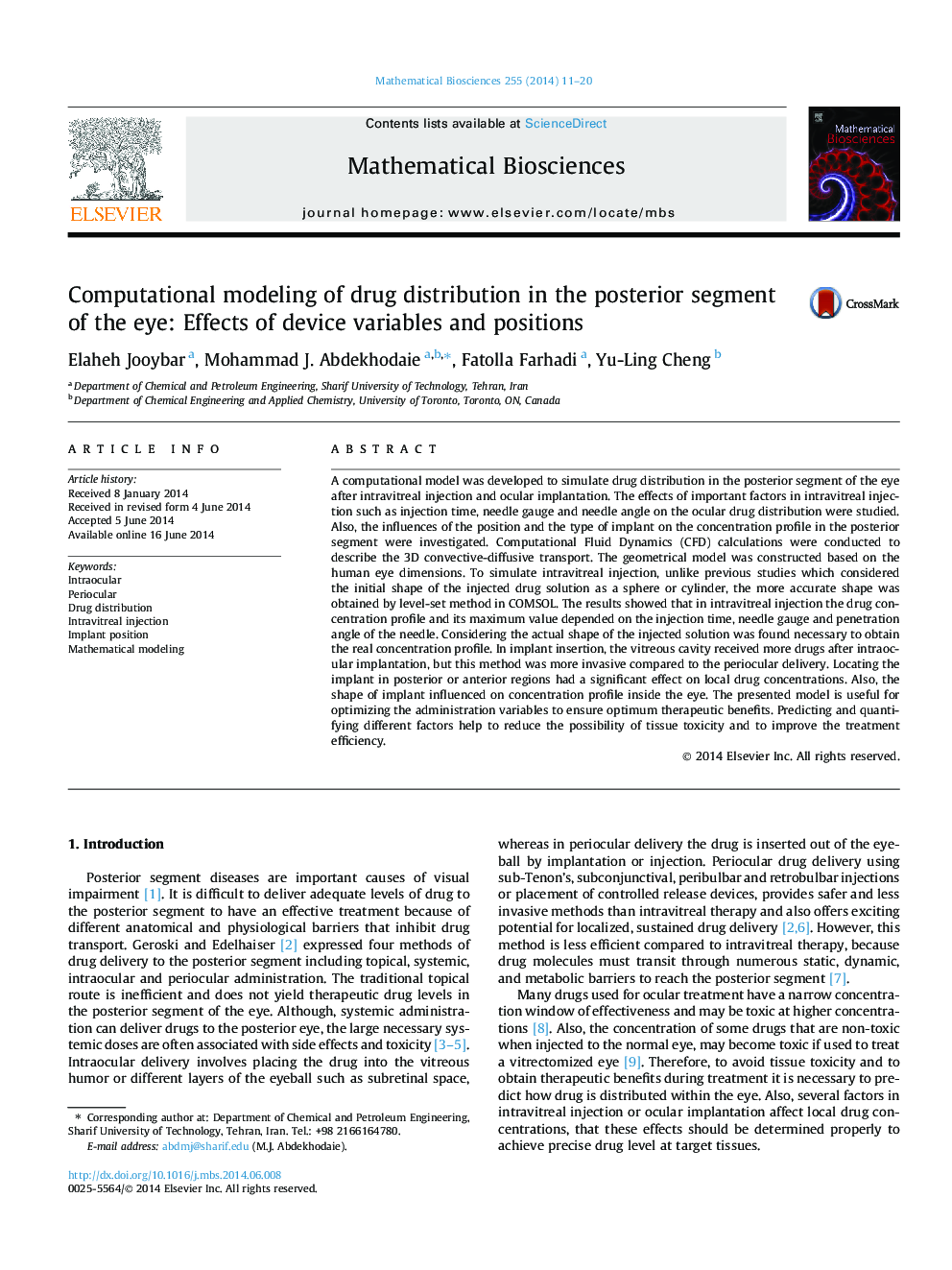| کد مقاله | کد نشریه | سال انتشار | مقاله انگلیسی | نسخه تمام متن |
|---|---|---|---|---|
| 4500057 | 1624025 | 2014 | 10 صفحه PDF | دانلود رایگان |
• Presenting a computational model to simulate drug distribution in the eye via different administration methods.
• Evaluating the effects of injection time, needle gauge and penetration angle of the needle in intravitreal injection.
• Investigating the effects of implant position and type on the concentration profile in the posterior segment of the eye.
A computational model was developed to simulate drug distribution in the posterior segment of the eye after intravitreal injection and ocular implantation. The effects of important factors in intravitreal injection such as injection time, needle gauge and needle angle on the ocular drug distribution were studied. Also, the influences of the position and the type of implant on the concentration profile in the posterior segment were investigated. Computational Fluid Dynamics (CFD) calculations were conducted to describe the 3D convective-diffusive transport. The geometrical model was constructed based on the human eye dimensions. To simulate intravitreal injection, unlike previous studies which considered the initial shape of the injected drug solution as a sphere or cylinder, the more accurate shape was obtained by level-set method in COMSOL. The results showed that in intravitreal injection the drug concentration profile and its maximum value depended on the injection time, needle gauge and penetration angle of the needle. Considering the actual shape of the injected solution was found necessary to obtain the real concentration profile. In implant insertion, the vitreous cavity received more drugs after intraocular implantation, but this method was more invasive compared to the periocular delivery. Locating the implant in posterior or anterior regions had a significant effect on local drug concentrations. Also, the shape of implant influenced on concentration profile inside the eye. The presented model is useful for optimizing the administration variables to ensure optimum therapeutic benefits. Predicting and quantifying different factors help to reduce the possibility of tissue toxicity and to improve the treatment efficiency.
Figure optionsDownload as PowerPoint slide
Journal: Mathematical Biosciences - Volume 255, September 2014, Pages 11–20
